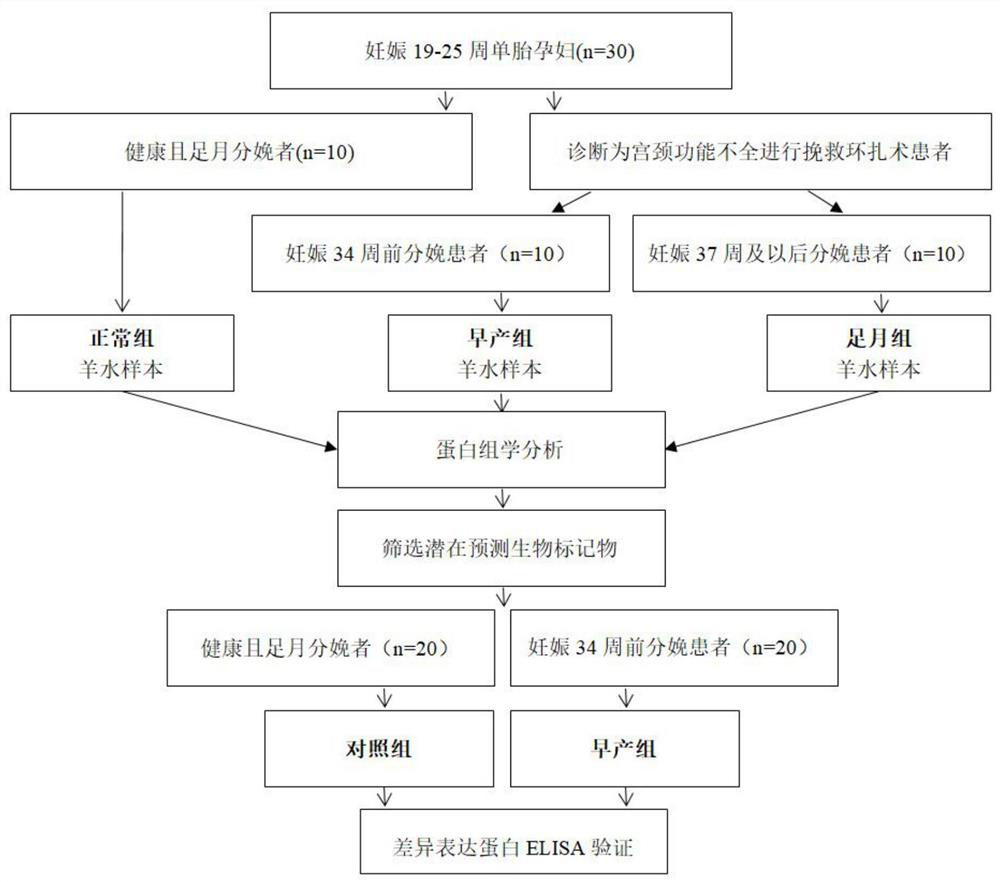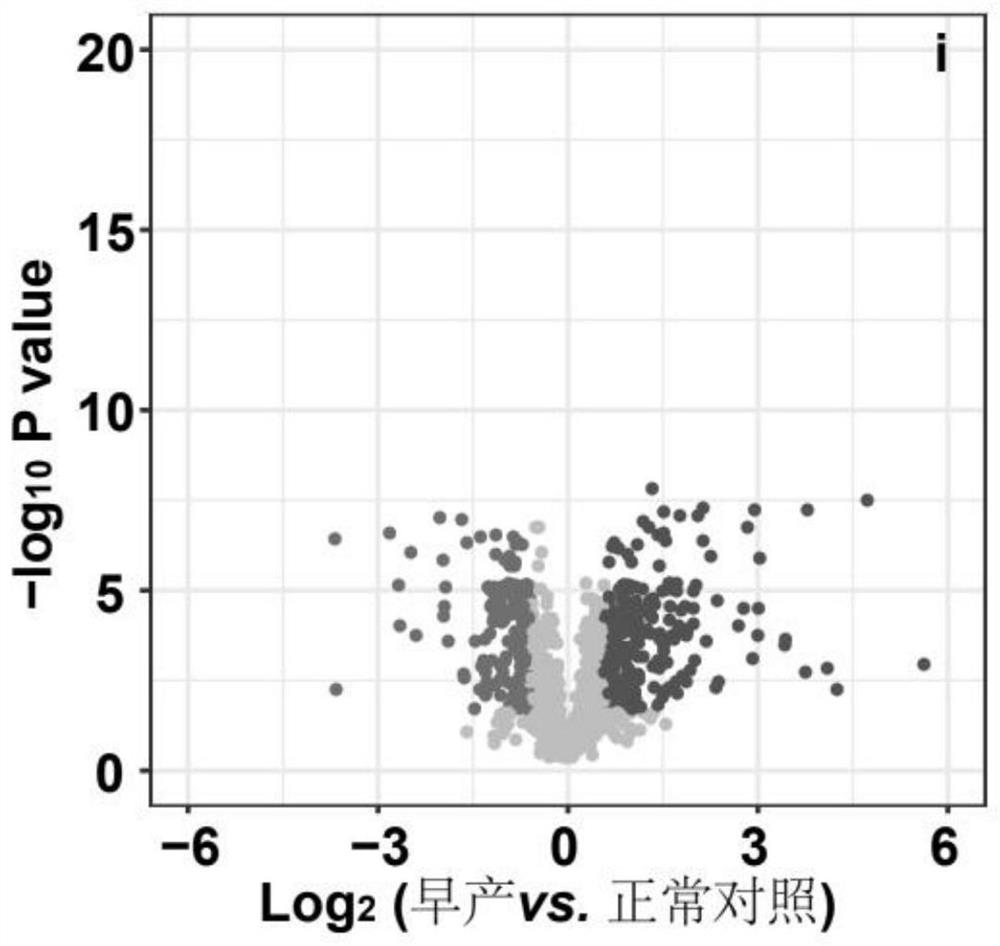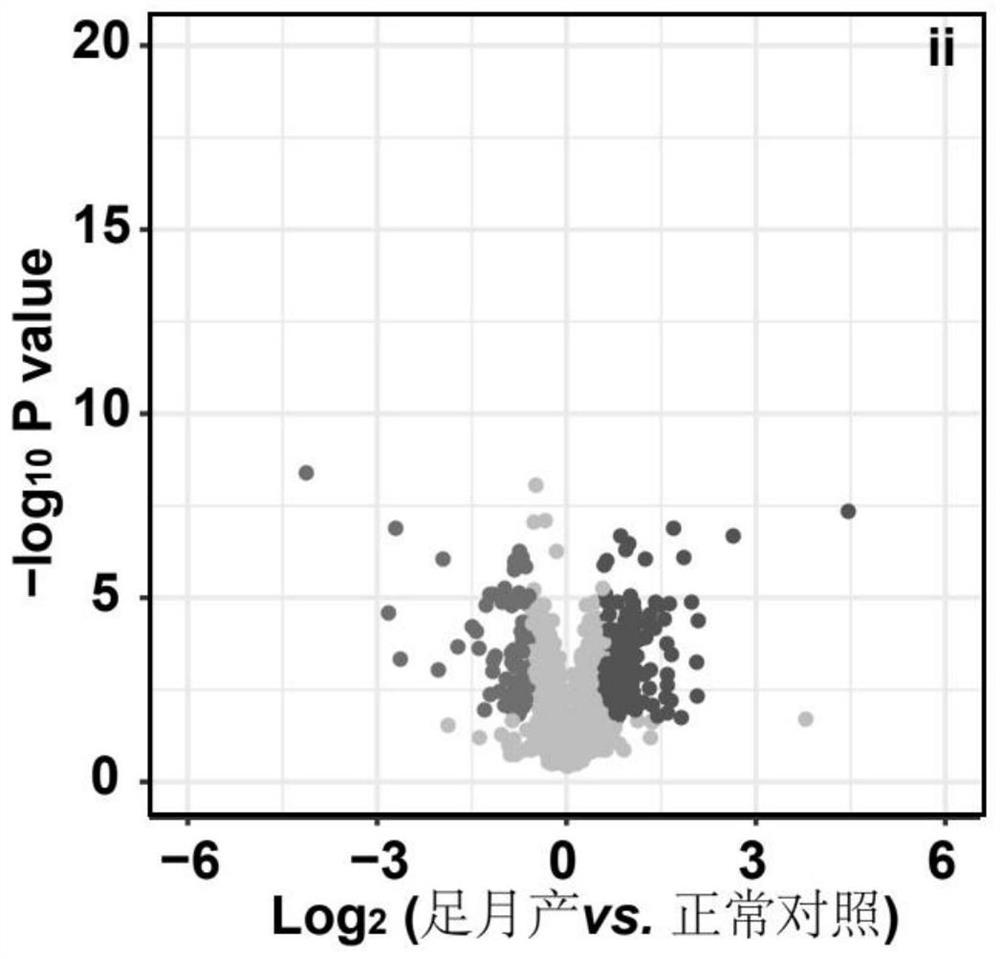Amniotic fluid proteomics detection method of premature delivery prediction marker and application thereof
A technology of proteomics and detection methods, applied in the field of amniotic fluid proteomics detection of preterm birth prediction markers, can solve the problem of unclear regulatory mechanism and other problems
- Summary
- Abstract
- Description
- Claims
- Application Information
AI Technical Summary
Problems solved by technology
Method used
Image
Examples
Embodiment
[0151] Analysis of amniotic fluid can predict a variety of pregnancy complications based on information revealing underlying biological mechanisms.
[0152] The invention adopts liquid chromatography-mass spectrometry combined analysis technology to detect the differentially expressed proteins in the amniotic fluid of premature patients (excluding cervical factors) and full-term normal control pregnant women. 44 proteins related to preterm birth and 9 signaling pathways that may be involved were identified by GO and KEGG analysis, and 8 interested proteins were selected for further analysis. Enzyme-linked immunosorbent assay was used to verify the expression of selected candidate proteins; ELISA analysis was performed in another cohort to verify the expression of these proteins. The present invention found that IGFBP-4, renin, SEPRINA1 and TIPM-1 are potential biomarkers of SPTD associated with spontaneous PTD after exclusion of cervical insufficiency <34 weeks.
[0153] Amon...
PUM
 Login to View More
Login to View More Abstract
Description
Claims
Application Information
 Login to View More
Login to View More - R&D
- Intellectual Property
- Life Sciences
- Materials
- Tech Scout
- Unparalleled Data Quality
- Higher Quality Content
- 60% Fewer Hallucinations
Browse by: Latest US Patents, China's latest patents, Technical Efficacy Thesaurus, Application Domain, Technology Topic, Popular Technical Reports.
© 2025 PatSnap. All rights reserved.Legal|Privacy policy|Modern Slavery Act Transparency Statement|Sitemap|About US| Contact US: help@patsnap.com



